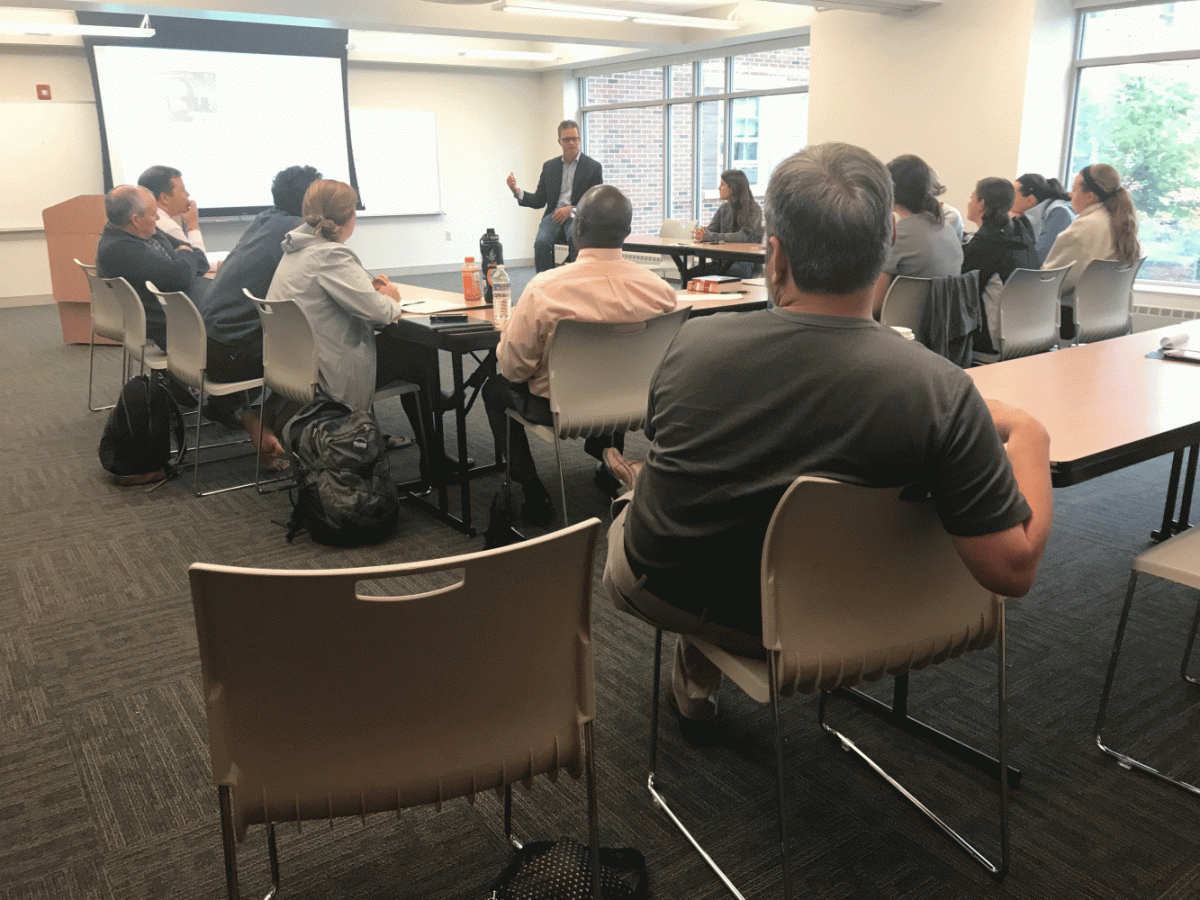Fairfield scholar explores the challenges of masculinity on the Lakota ‘Rez’
October 1, 2017
In celebration of the 5th anniversary of Saint Anselm’s interdisciplinary minor in Gender Studies, two special events took place this past week that explored the role of masculinity in the Lakota Native American tribe. Students and faculty attended a showing of the documentary “Skins” that depicts the lives of two Native American brothers living on the Pine Ridge Reservation. Following was the talk “The ‘Rez’, Lakota Males, and the Regeneration of Lakota Masculinities” given by Director of American Studies at Fairfield University, Dr. Peter Bayers.
The Saint Anselm Gender Studies program, which is affiliated with the college’s English Department, has for the past five years offered a minor that “gives students the methodical and theoretical tools to analyze how social understandings of masculinity and femininity affect society, politics, economics, and the formation of the human person.”
The mission of the Gender Studies minor is to provide the framework in which the “analysis of gender and all it entails can be imaginatively and empathetically applied to students’ public and private lives.” To complement this mission, the program’s 5th anniversary events are centered around Native American gender roles and their exploration of masculinity within the Lakota tribes.
Dr. Bayers, professor and author of the recent essay “Spirituality and the Reclamation of Native Masculinity in Chris Eyre’s ‘Skins’”, has been highly involved in the study of gender within Sioux Nation Native American contexts through his research, yearly volunteer work on the Cheyenne River Sioux Tribe Reservation and position as a board member for the non-profit organization Simply Smiles.
Dr. Bayers affirms that not only is the study of gender “more important than ever, based on our current political and social climate in this country”, but that gaining a deeper understanding of the role perceptions of their own masculinity play within the tribes is essential to uncovering the roots of the trauma and suffering that runs so rampant in reservations.
The Lakota is one of the tribes belonging to the Sioux Nation confederacy, which is one of the earliest established groups of Native American tribes in the history of North America. The Lakota, Dakota, and Nakota make up the Sioux Nation and all possess their own characteristics, dialects, and ancient traditions that root them in both their individual tribal identities and in strong bonds to the greater Nation.
Dr. Bayers discussed during his talk on Lakota Masculinities the serious threat European colonization in the late 1800’s posed towards the once-strong cultural identities of the Lakota people. While the Lakota had once understood themselves through the deeply rooted traditions and gender roles of their ancestors such as traditional clothing, dances, religious rituals, and the domestic sphere, they were forced to conform their way of life to fit the new colony standards thus losing their cultural grounding.
During his talk, Dr. Bayers showed examples of male Lakota ledger drawings from the 1880’s, which depict understandings of their own Lakota masculinity right before colonization occurred. Using these ledger drawings, he drew connections between the way their masculinity was represented then versus now through the contemporary example of modern Lakota hip-hop artist, Frank Waln and his own depiction of masculinity.
Dr. Bayers found upon examining modern depictions of Lakota masculinity that there is a hunger in the current Lakota generation to understand the role their ancestors played as warriors and family members, and to re-discover what has been lost of their Native American roots. While the poverty, suffering, and struggle to reclaim their identities as Lakota males is still an overwhelming issue today, Bayer finds that the new generation’s desire to revive tradition and the roles their ancestors played in the community is a promising sign of renewal and progress.



